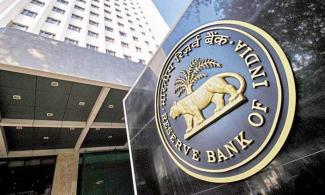
DID you think the Modi Government’s policy-makers could not come up with a more disastrous idea than even Demonetisation? If so, you’re wrong.
What Exactly is Sec 7
Section 7(1) of the Reserve Bank of India Act says the Centre may, from time to time, give such directions to the Bank, after consultation with the governor of the RBI, considered necessary in the public interest.
Section 7(2) adds – subject to any such directions, the general superintendence and direction of the affairs and business of the Bank shall be entrusted to a Central Board of Directors, which may exercise all powers and do all acts and things which may be exercised or done by the Bank.
This is being seen as impinging on the autonomy of the central bank, and so far in independent India’s history has no precedence.
If the central government were to coerce RBI into paying a special dividend of approximately 3.6 lakh crore rupees which is equal to two fifth of reserves accumulated over decades, it would be even more disastrous than demonetisation.
How can Central government acquire RBI’s Reserve?
There are two routes
1. Asset Monetisation
2. Print Cash
Allow me to explain the downstream impact of these options.
The Retained Accumulated Reserve is 3 lakh Crore (Approx)
The Revaluation of Gold Forex Reserve (Unrealised) is 7 Lakh Crore (Approx)
What is unrealised Reserve ?
This is Non-Cash gains. Let me explain in layman terms.
If RBI bought a dollar in 2004 it would have done so at around Rs 32. But the present value of the US Dollar is around Rs 73. It means RBI made an unrealised gain of Rs 41 Rupees. Likewise if RBI bought Gold at Rs 24890 Per 10 gram and now the value of gold is around Rs 32,270 it means RBI made an unrealised profit of Rs. 7380. These are just unrealised profits which are booked in the books of RBI. RBI has not made an actual profit. And Indian law prohibits the payment of cash dividend from such unrealised profits.
Options under Asset Monetisations
1. Sell Gold Reserves of RBI: This one is theoretically possible, but economically disastrous as it would lead to an over-dependency on foreign exchange and would be suicidal for India which is an import oriented economy.
2. Sell Government sector bonds held by RBI: This is more feasible and easier, but will break the back of money markets. The supply of government sector bonds will increase exponentially, and cash will be sucked out. To curb the excess cash RBI would have to increase its interest rates. It will put burden on masses to pay the extra interest. With higher rates, the demands for loan by common persons would fall - and this too would be suicidal.
3. Sell FOREX reserves: This would expose India to dollar bankruptcy, and over-value the rupee. This is most dangerous step. It will ruin the economy beyond repair.
4. The “Print Cash” Route:
For this the government has to cancel Rs 3.6 lakh crores of Government-sector bonds, and write off this loss to the reserves. Then it would have to buy Rs 3.6 lakh cr of fresh Government-sector from the government, and pay for it by printing cash. The state’s debt is unchanged, RBI’s reserves are reduced, and the government gets hold of newly printed currency.
Here you simply pass two accounting entries on RBI’s balance sheet, ie, Debit Reserves and Credit New Government Expense Account by Rs 3.6 lakh cr. You’ve just created fresh cash.
The only way RBI can practically pay a special dividend of Rs 3.6 lakh cr to Central government is by printing cash and that’s another suicidal idea which is outlawed by India’s Companies Act.
Liberation Archive
- 2001-2010
-
2011-2020
- 2011
- 2012
- 2013
- 2014
- 2015
- 2016
- 2017
-
2018
- January-2018
- February-2018
- March-2018
- May 2018
- June-2018
- July 2018
- August 2018
- September 2018
- October 2018
- November 2018
-
December 2018
- Smash Brahmanical Patriarchy!
- Modi Raj: The Most Shamelessly Corrupt and Criminal Government India Has Had
- Cronyism Is At The Root of Modi Government's War on RBI
- Modi Vs RBI: What's At Stake
- The 59-Minute Loan Scam
- Mid-Day Meal Workers' March to Parliament
- Sanitation Workers' National Convention
- DTC Workers' Historic Strike
- #MeToo: Working Class Women Share Their Stories
- AIPF Issues a People's Charter for 2019
- 'Oust BJP, Save The Poor'
- People's Heroes of Jehanabad
- Supreme Court as Custodian of the Constitution
- US Mid-Term Elections: Some Takeaways For Progressive Politics
- Demand Release of Kidnapped Marxist Student Activists and Workers in China
- Xenophobia and Hate Crimes Grow in BJP-ruled Assam
- Justice At Long Last
- Fahmida Riaz
- Comrade Bhola Sen
- Comrade Jatin Mardi
- Comrade Ramdhani Baitha
- Comrade Birendra Pal
- 2019
- 2020
- 2021-2030
Charu Bhawan, U-90, Shakarpur, Delhi 110092
Phone: +91-11-42785864 | Fax:+91-11-42785864 | +91 9717274961
E-mail: info@cpiml.org







